How to build a sales funnel

- What is a sales funnel?
- How does a sales funnel work?
- 6 stages of a sales funnel to focus on
- Awareness
- Discovery
- Intent
- Action
- How to create a sales funnel
- 1. Research your audience
- 2. Grow your audience
- 3. Create lead pages for your sales funnel
- 4. Have your newsletters organized
- 5. Always keep in touch with your clients
- The bottom line
The simplest definition of a sales funnel is the way people go to finally purchase your product. However, in practice, things turn out to be much more complicated than they may seem at first.
Sales funnel's got its name for a reason. Because of the shape, to be precise. This helps to remember the principle of how this marketing concept works.
There are a lot of potential customers at the top end of a sales funnel. But there the number of people lessens as the funnel narrows to the bottom end. At the same time, the closer people are to the bottom, the more determined to buy they are.

Now let's dive into building a sales funnel for your product and using it.
Every potential client goes through a sales funnel individually and independently. Some of them never leave the top, others slowly but surely go to the bottom, passing the stages gradually one by one. There are also people who slide through, mixing or skipping the stages, they can jump to purchasing the same moment they see your product.
Fortunately, most users can be grouped by the pattern they move through a sales funnel. Once you have figured out these patterns, you have all chances to put your potential customers on the rails from the top to the bottom of a sales funnel.
You need to create different sales funnels for different patterns. Thus, you can move your audience segments to the funnel bottom.
The natural order of making purchases is presented as 6 stages of the sales funnel in marketing. These stages have a certain order. That is how a client usually moves towards making purchases:
- Awareness.
- Discovery.
- Evaluation.
- Intent.
- Purchase.
- Loyalty.
Not all the stages are always present in a sales funnel. A brand may never have some of the sales funnel. Its activity, topic, and some other specifics determine which of the stages are relevant.
Let's look closer at the most important stages of a sales funnel, which a marketer works with most often.
When you build a sales funnel, you should always think of how to get people into it. It means to let people know about you. You need to attract and retain the attention of prospects at this stage.
Use all social media channels and tools to get people into your sales funnel. A potential client at this stage can see your Instagram post in their feed, Tweet, advertisement, or find your website using a Google search.

Whatever methods you use to increase your brand awareness, make it crystal clear who you are and what your product is. If you offer what they need, they move to the next stage of the sales funnel and buy your product. If your offer is not relevant, you both won't waste your time.
At this stage of a sales funnel, your prospects know about you but hesitate to buy. They do research to make a decision. They want to know about your offer and compare it with others'.
When building a sales funnel, you provide the prospects with all the information they may want to know about your brand and product at this stage. You can post about the product, tell about it in the newsletter, launch an ad, and many more.
Show your product at its best to make them move to the next stage of your sales funnel. Tell them how your product can help them, and about its variations and advantages.
Here we build the next stage of a sales funnel. The research is over and the best options are found, the customer is up to make a decision. They choose between you and your competitors or 2–3 of your offers at this stage.
Encourage users to buy. They may know everything about your product and even want to buy it. But there may be things that stop them from placing an order. So give a discount or provide a bonus with the purchase to push them into action.

You've built a whole sales funnel and got close to the final stage, good job! A prospect converts into a customer. But don't breathe out until the deal is over. There are enough moments when something can go awry, so keep doing your best.
At this stage, you take an order, process it, and provide the product. Provide high quality service. Make sure it is easy to place an order, be quick to reply. Then, your customers move on to the next stage.
You may wonder what's the next stage if you have built a sales funnel and made a deal? The next stage is loyalty. Customers at that final stage come again to buy your product, recommend you to their friends, and write good reviews, which are a great influence on gaining new prospects in your sales funnel.
Surely, it takes time and effort to build a sales funnel. But it always pays off in the end. Once you get to know your audience and understand how to work with it, then your marketing campaigns become successful. In perspective, the sales rates grow fast, making your business more and more profitable.
Don't try to drive every human in the world into your sales funnel. Instead, focus on who may be interested in your product. And you need to do research to know these people.
Before you build a sales funnel, find your target audience. Analyze people who already know about your brand and your rivals' audiences. Where did they know about you or the rivals? What pages do they visit? What buttons trigger them? What do they like and don't like?
These and many other marketing data can tell you about their interests and preferences. All this information will help you to build your sales funnel. You will know what to post, or what ads to launch to attract new prospects, and move them through the funnel.

Social media networks help you to grow your audience. You can find people from different stages of a sales funnel there. Post to your accounts and launch ads for each of the stage groups.
You can use free social media features and tools to attract people into your sales funnel. Add hashtags and locations when posting. Run contests with prizes, free trials, or free content. Then, you will reach more people.
Fast audience growth requires spending. Take advantage of popular advertising platforms. You can launch advertising for people from different stages of the sales funnel:
- Facebook Ads.
- Google AdWords.
- LinkedIn Ads.
- Twitter Ads.
When you want to drive people into the sales funnel or make them move through it, you need lead pages. These pages are where you invite your prospects to learn more or buy. You should place its link in bio, Stories, and also posts on some social networks. You can invite users to follow the link in your bio from where you can't add a link, for example, an Instagram post.

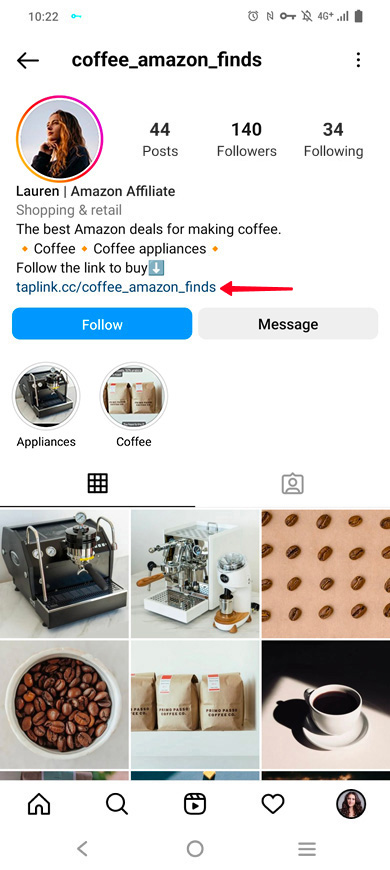
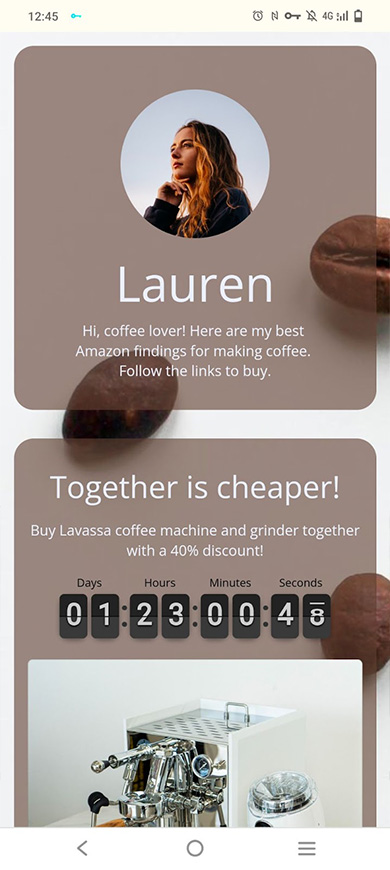
You need to build individual pages for people at different stages of a sales funnel. This is because these people have different needs. People at the discovery stage need a clear understanding of what you offer. People at the intent stage need a discount or bonus that would trigger them to buy. So pages for them will be different.
When you create a page specifically for people from one of the stages it helps you to bring them to the final stage. If a user finds its trigger on the page, they come closer to make a purchase.
Create lead pages on Taplink, which is a great tool for building link trees and landing pages. There are three main reasons for this:
- Multiple landing pages. This is the tool that allows you to create as many pages as you need. So you can create pages for people at different sales funnel stages. Even more, create pages for different audience segments at each of the stages.
- A variety of elements to add. You can place pictures and videos, music, timers, maps, buttons, and many more on your lead pages. In a word, there are enough tools to introduce your brand and persuade people to buy. Thus, you will get them in the sales funnel and make move through it.
- Pages made in this sales funnel builder load instantly on mobile devices. It is important because most people scroll through their social network feed from a smartphone. Thus, they will get to your lead page from a smartphone. If it loads slowly, your campaign is ruined and you lose the customers.
Read how to make an Instagram landing page on Taplink. We promise it's easy! Look at the examples of lead pages for sales funnels that can be created in this service. Follow the links to get the page templates after a sign-up:
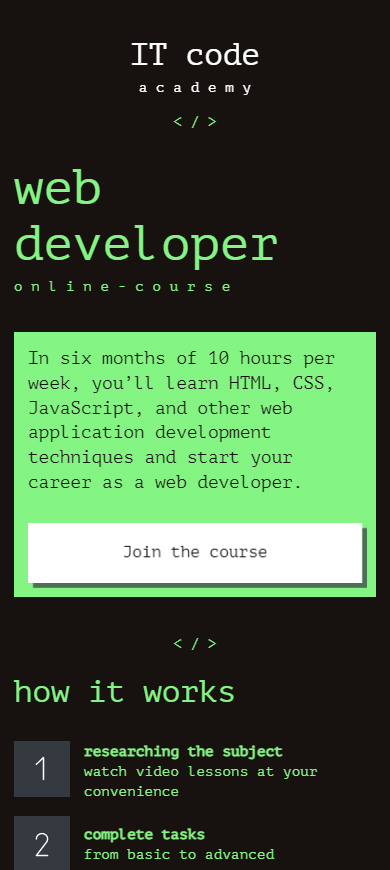
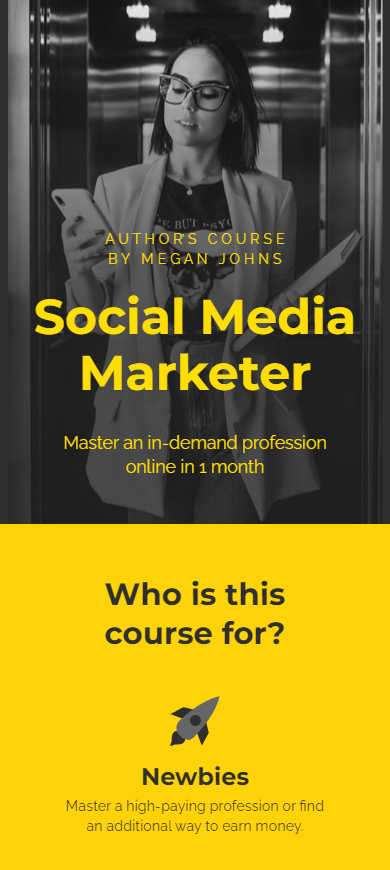
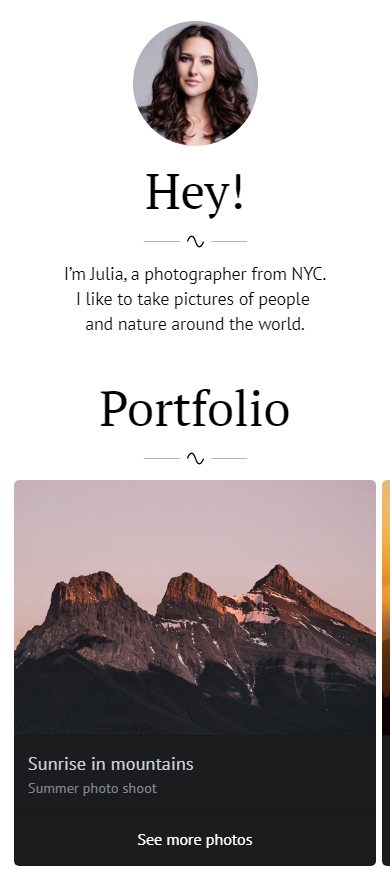
Newsletters help you at every stage of the sales funnel. You can use it to tell prospects more about your brand, inform them about sales, discounts, new arrivals, online meetings, or send useful tips on the topic.
Use online services and tools to start and track a newsletter. Here are main tips:
- Make sure all your leads from the sales funnel are on the list and receive emails from you. Divide them according to the stage they are at. There will be several groups, who receive different letters.
- You also need to collect and analyze the results. Track how many people open the emails, follow the links.
- Newsletters campaigns should be scheduled. It is important to email regularly. At the same time, don't be persistent, send not more than 1–2 emails a week.
Communication with your clients is important for your brand development in general. And it is instrumental for making your customers move through a sales funnel.
In fact, how you communicate is even more important. If you provide low-quality service, you still communicate, but your clients are likely to move up to the top of a sales funnel or quit it forever. That's why it is important to improve the communication and service quality.

Do your best to answer all your customers` questions at all stages of a sales funnel. Provide comprehensible and full answers, be polite and initiative. No less important to be quick to answer. A minute can be crucial, this time is enough to lose a customer.
Work with a client after closing a deal. This is important for the last stage of a sales funnel, where you build your brand loyalty. Contact existing customers to thank them for their orders or to invite them to give feedback. You can also give them coupons or suggest checking out new items so that they make a new order.
It takes time to build a sales funnel. What's more, this is a never-ending job. Consumers' behavior is changeable, which means there are always things to learn, optimize and improve.
You will need to create new sales funnels as your audience changes and as your brand develops. But if you really care about sales growth and getting more loyal customers, it is worth it.